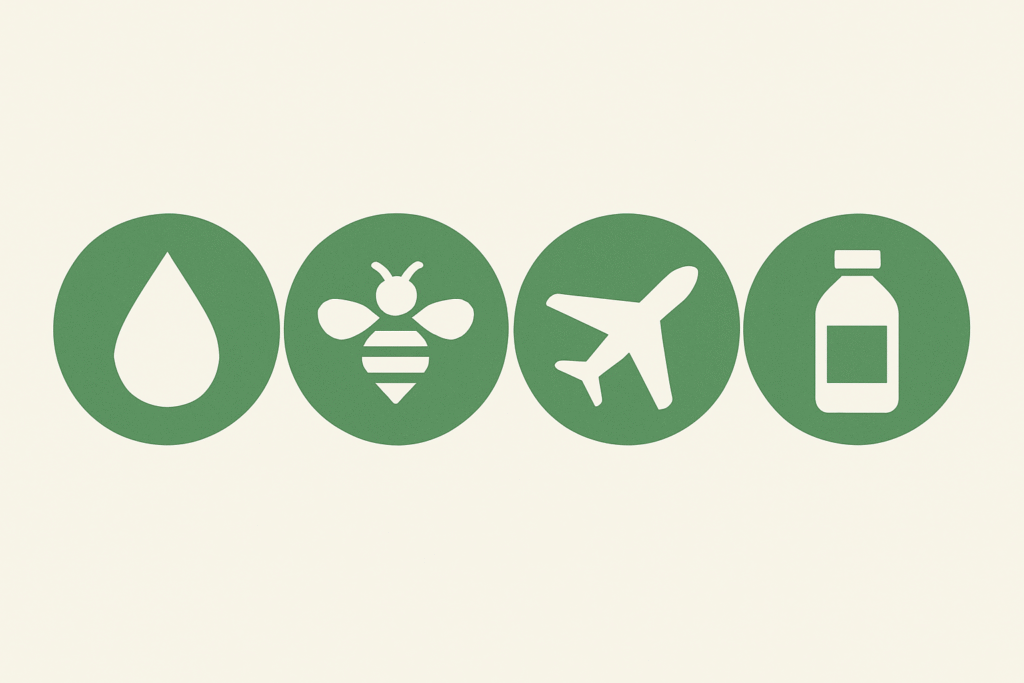Your cart is currently empty!

Veganism is Bad? Here’s the Side No One Talks About
Introduction
Veganism is often hailed as the ultimate eco-friendly lifestyle—but is it really? While reducing animal consumption has benefits, the rise of industrial vegan products has created unexpected environmental costs. In fact, in many cases, vegan staples like almonds, soy, and avocados can have a greater negative impact on the planet than some forms of sustainably raised meat. From monoculture crop farming to global shipping emissions and pollinator collapse, this post breaks down the side of veganism that’s rarely discussed—and what you can do about it.
Table of Contents
- Monoculture and Biodiversity Loss
- Water Waste from Plant-Based Products
- Pesticides, Bees, and the Hidden Cost of Veganism
- Global Shipping and Food Miles
- Over-Processing and Plastic Waste
- What You Can Do Instead
Monoculture and Biodiversity Loss
Veganism depends heavily on a handful of high-demand crops like soy, wheat, corn, and almonds. These crops are typically grown in monocultures, which strip the land of biodiversity and destroy ecosystems.
- Over 3 million hectares of forest in South America have been cleared for soy production—only part of it is for livestock feed; a rising share is for human consumption, including vegan products.
Source: WWF - Monocultures are highly susceptible to pests and disease, increasing dependence on synthetic chemicals that damage the soil and water systems.
Meanwhile, well-managed livestock grazing can actually improve soil quality, encourage plant diversity, and sequester carbon when done regeneratively.
Water Waste from Plant-Based Products
One of the most water-intensive vegan crops is the almond.
- It takes 1.1 gallons of water to grow a single almond
Source: BBC - A single glass of almond milk can require up to 74 liters (19.5 gallons) of water
Source: Oxford University Environmental Study
Compare that to pasture-raised beef, which—when produced locally and sustainably—can use water more efficiently through rain-fed systems and rotational grazing.
Pesticides, Bees, and the Hidden Cost of Veganism
Many vegan crops are grown using neonicotinoid pesticides, which are linked to massive bee population declines.
- California’s almond industry alone sees 35–40% of commercial bee colonies die off each year due to the stress of pollination, disease, and chemical exposure.
Source: Scientific American - Migratory beekeeping, used to pollinate crops like almonds and avocados, contributes to the spread of disease and poor bee health, yet it’s essential to vegan farming.
In contrast, livestock-based systems that integrate wildflower pastures can support pollinator health—especially if they reduce dependence on monoculture crops.
Global Shipping and Food Miles
Many vegan foods—like quinoa from Bolivia, avocados from Mexico, or coconuts from the Philippines—travel thousands of miles to reach your plate.
- Imported avocados alone contribute over 2.2 kg of CO₂ per kilogram, largely due to transportation emissions and refrigeration.
Source: Carbon Trust - 80% of global quinoa exports now go to high-income countries, raising prices and reducing local availability in producer countries like Peru and Bolivia.
Source: NPR
Local meat—particularly from farms using rotational grazing or silvopasture systems—can have lower emissions than many imported plant-based foods.
Over-Processing and Plastic Waste
Vegan meat alternatives like Beyond Meat or Impossible Burger are highly processed and often come in plastic packaging with long, international supply chains.
- One Impossible Burger has a carbon footprint 89% lower than beef, but requires industrial processing, synthetic additives, and non-compostable packaging.
Source: Impossible Foods
But this comparison ignores grass-fed or regenerative meat, which can actually result in net-zero emissions or even carbon sequestration.
Source: Project Drawdown – Regenerative Agriculture
In other words, comparing factory-farmed beef to vegan processed food is a false choice—neither is ideal. The real environmental win comes from local, sustainable production.
What You Can Do Instead
Whether you’re vegan or not, the biggest environmental improvement comes from where and how your food is produced, not just what it is.
✅ Support local farms – Shop at your farmers market, join a CSA, or buy directly from producers using regenerative practices.
✅ Eat with the seasons – Avoid off-season imported produce that racks up food miles.
✅ Reduce food waste – 30–40% of all food is wasted. Focusing on zero-waste habits may have more impact than your diet label.
✅ Choose real food – Avoid ultra-processed vegan alternatives. Stick to simple, whole ingredients—plants or animal-based.
✅ Grow your own – Even a backyard garden or small livestock flock can reduce your environmental footprint.
Conclusion
Veganism isn’t inherently bad—but when it depends on industrial agriculture, global shipping, and pollinator-harming practices, the environmental cost can be higher than you think. The truth is, there’s no perfect diet—but conscious, local, and regenerative choices make a bigger difference than any label ever will.


Leave a Reply